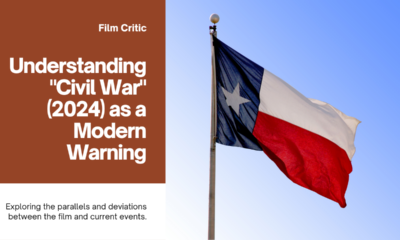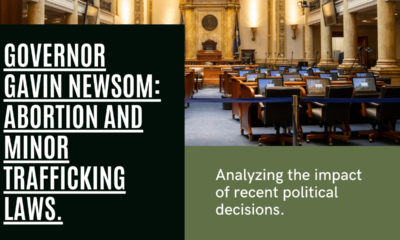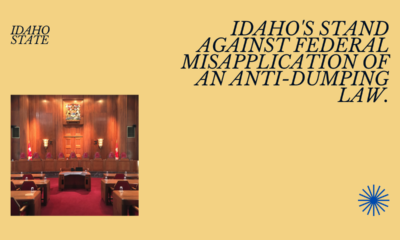Judicial
Wetlands must connect to navigable waters – SCOTUS
The Supreme Court held that wetlands, to fall under federal regulations, must connect to navigable waters and blend in with them.

The Supreme Court today handed down a decision clarifying the terms waters of the United States and wetlands. Under it, waters of the United States, within the meaning of the Clean Water Act, must be navigable or connected. Furthermore, wetlands must have a contiguous surface connection to waters that are navigable or connected to navigable waters. To paraphrase the opinion, “soggy” “backyard[s],” “mudflats, sandflats, … sloughs, prairie potholes, wet meadows, … playa lakes, … ditches, swimming pools and puddles” do not necessarily qualify as wetlands subject to federal regulation.
Defining wetlands
The case at hand is Sackett et ux. v. Environmental Protection Agency et al. 598 U.S. ____ (2023).
Michael and Chantell Sackett bought some land near Priest Lake, Idaho, and started to backfill it to build a house. At once the EPA told them their property contained wetlands that came under its jurisdiction. By backfilling the land, they were discharging pollutants into “the waters of the United States.” The property is “near a ditch that [feeds] into a creek, which [feeds] into Priest Lake, a navigable, intrastate lake.” A District Court handed down summary judgment in favor of the EPA, and the Ninth Circuit affirmed.
No one disputed that Priest Lake was navigable and connected to further navigable bodies. (After all, Priest Lake historically supported the transport of logs from logging activity.) But the “wetlands” were not a natural extension of the lake, and had no connection, direct or indirect, with it. Being “near the ditch” was not enough.
So says Judge Samuel A. Alito’s opinion, which sets a new standard for what are wetlands within EPA jurisdiction. Alito appeared to scold the EPA (and the Army Corps of Engineers) severely for trying to bring every soggy piece of land under their jurisdiction, when the law did not allow that. “The outer boundaries of the [Clean Water] Act’s geographical reach have been uncertain from the start,” Alito wrote. He also noted that setting these bounds has bedeviled the Court considerably.
Picking the nits
Words like adjacent and contiguous and navigable are the key to understanding Alito’s opinion. The EPA almost arbitrarily defined adjacent to mean “in the neighborhood.” In fact the ditch in question is on the other side of a road from the Sacketts’ land.
Not so, says SCOTUS. From now on, adjacent means connecting contiguously on the surface, so that an obsever can’t tell where the wetlands leave off and the waters begin. Being on the other side of a road from a ditch will no longer qualify.
The Court reversed the decision of the Ninth Circuit and remanded the case to that Court. Chief Justice Roberts and Justices Thomas, Gorsuch, and Barrett joined Justice Alito’s opinion.
Justice Clarence Thomas, in his concurrence, seemed to chide Alito for not adequately clarifying the adjective navigable in his opinion. Furthermore he sought to limit federal jurisdiction to waters navigable in the interstate sense, consistent with the Commerce Clause. Justice Gorsuch joined this concurrence.
Justice Elena Kagan, in her concurrence, lamented Alito’s redefinition of adjacent, and sought to preserve the old meaning. Given that attitude, her reasons for concurring in the reverse-and-remand judgment are not clear. Justices Sonia Sotomayor and Ketanji Brown Jackson joined this concurrence.
How much is enough separation?
Finally Judge Kavanaugh wrote yet another concurrence, making clear that the Sacketts’ lands do not fall under the Clean Water Act. The reason for that is that the separation of the Sacketts’ soggy ground from the ditch on the other side of the road is sufficient to prevent any “pollutant” from getting into that ditch. So the Sacketts’ activities do not threaten Priest Lake or any waters downstream of it. But, like Kagan, Kavanaugh thinks Alito conflated the word adjacent with the word adjoining.
This is actually another instance of the Court reining in the administrative state. The Court did this in West Virginia v. EPA last year, and has another similar case now pending.
Terry A. Hurlbut has been a student of politics, philosophy, and science for more than 35 years. He is a graduate of Yale College and has served as a physician-level laboratory administrator in a 250-bed community hospital. He also is a serious student of the Bible, is conversant in its two primary original languages, and has followed the creation-science movement closely since 1993.
-

 Clergy4 days ago
Clergy4 days agoWhy Do The American People Let The Corrupt Media & Politicians Set The Propaganda Narrative – Speak On Their Behalf
-

 Entertainment Today5 days ago
Entertainment Today5 days agoCivil War (2024) – an incomplete prediction
-
![CHAPTER 10: Objective Reality Is Required for a Free Society Space Is No Longer the Final Frontier—Reality Is [upcoming release May 2024]](https://cnav.news/wp-content/uploads/2024/04/Objective-reality-v-acceptance-400x240.png)
![CHAPTER 10: Objective Reality Is Required for a Free Society Space Is No Longer the Final Frontier—Reality Is [upcoming release May 2024]](https://cnav.news/wp-content/uploads/2024/04/Objective-reality-v-acceptance-80x80.png) Education4 days ago
Education4 days agoCHAPTER 10: Objective Reality Is Required for a Free Society Space Is No Longer the Final Frontier—Reality Is [upcoming release May 2024]
-

 Human Interest4 days ago
Human Interest4 days agoIdaho prepares to defend its abortion ban
-

 Civilization3 days ago
Civilization3 days agoEarth Day Should Celebrate U.S. Progress & Innovation
-

 Education20 hours ago
Education20 hours ago‘Grading for Equity’: Promoting Students by Banning Grades of Zero and Leaving No Class Cut-Ups Behind
-

 Civilization2 days ago
Civilization2 days agoNewsom plays silly abortion politics
-

 Education3 days ago
Education3 days agoThe Intifada Comes to America. Now What?










